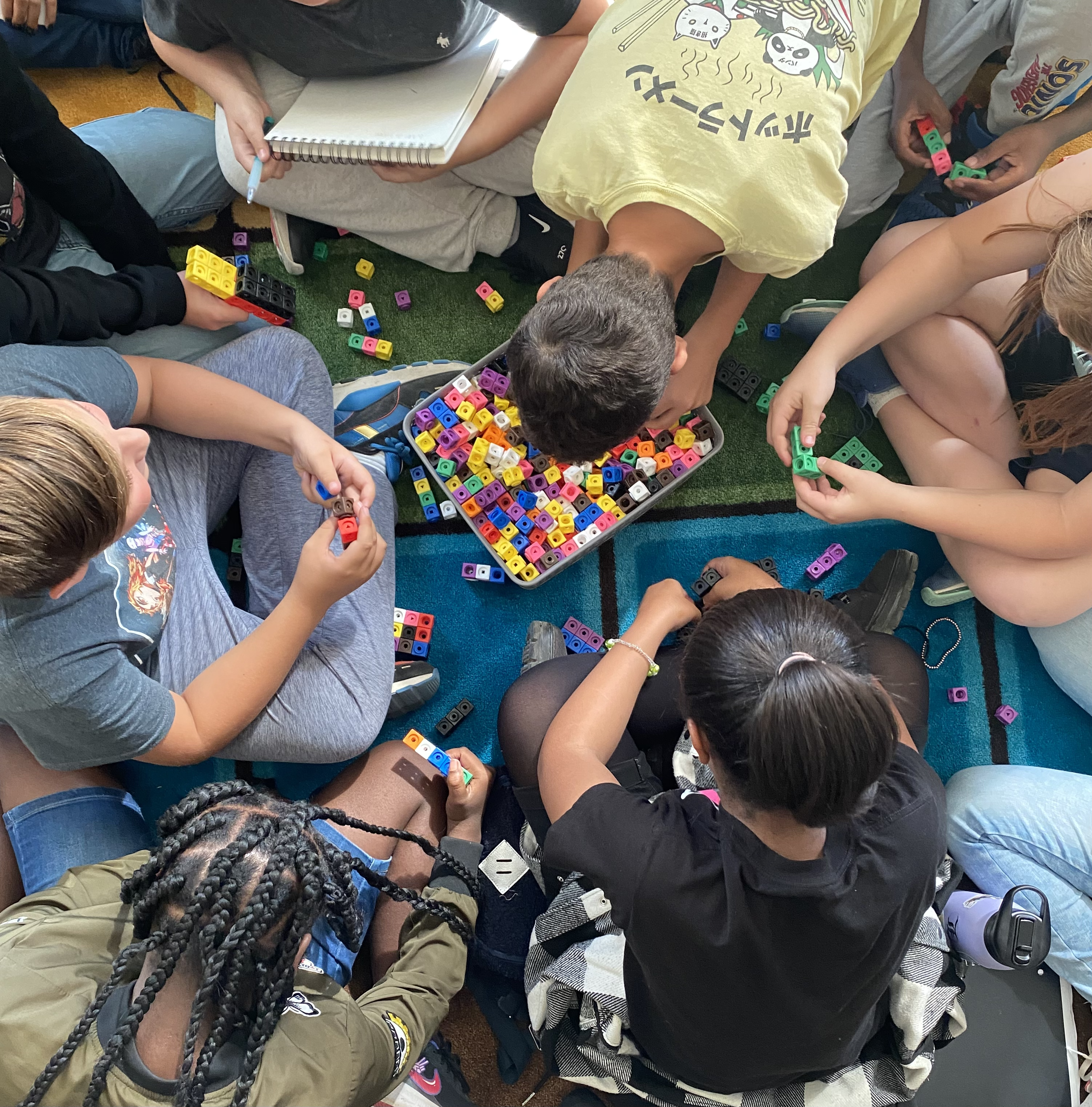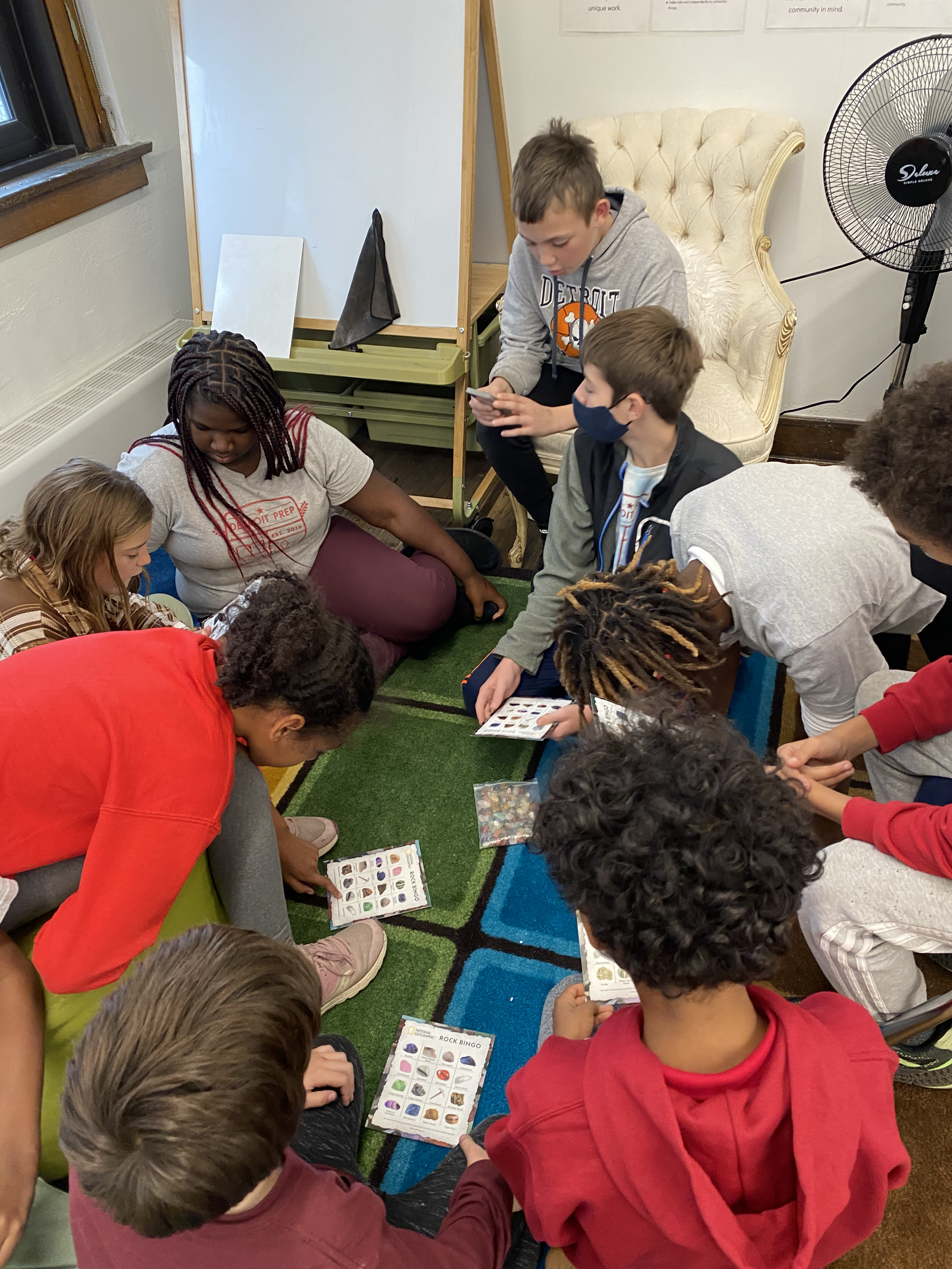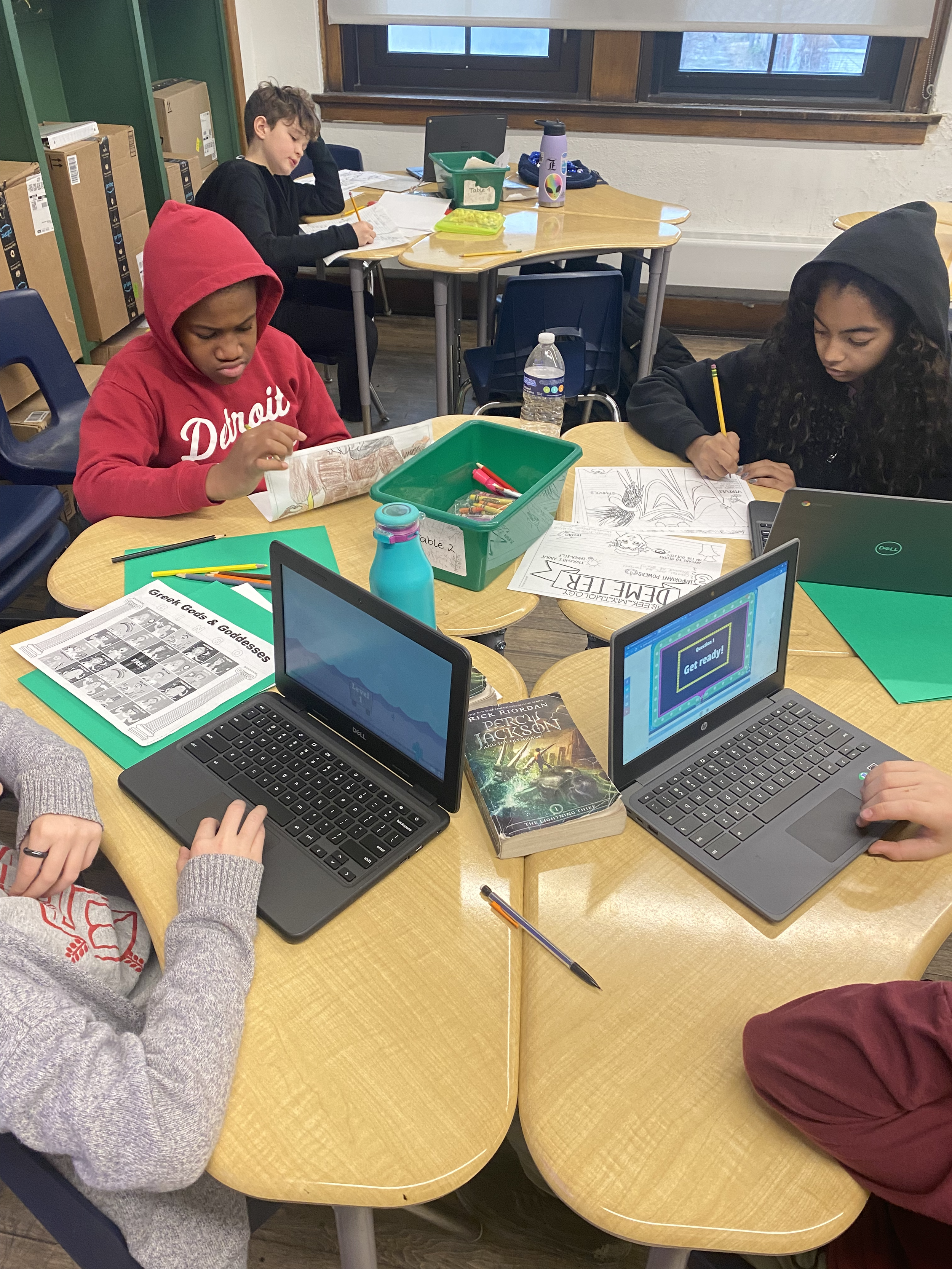Blog
Personal Organization
One of the biggest challenges of teaching is staying organized and on top of the workload. Teachers have a lot to remember. During my prep I need to make copies for labs and grade the morning crew’s cool downs. I also need to text Jane’s parents about what happened at recess. During lunch I’m running a peer-to-peer group. I have to hand out my book club’s books before Thursday. Before I leave for the day I have to make sure next week’s lesson plans are done and ready for review. Oh, and I have a blog post due!
For me I need constant reminders about all my tasks to get them done, but I also can’t be so overwhelmed I can’t manage my list. Here are some great resources I’ve used to help me, simply, remember.
Task Completing Apps:
TeuxDeux
This is my most used app on my phone! The app gives you a to-do list for each day of the week, and you can easily move the tasks between days or weeks. You can also set up repeated events, which for me are PD meetings and email reminders. There is also a web version, so I can easily see my list on any device!
Google Tasks
I used this before I found TeuxDeux. This option is great because it’s free, whereas TeuxDeux costs a subscription fee to unlock all features. I liked that I could connect this app with my work email and have all my needs in one place.
To Do (Microsoft)
A great alternative to Google Tasks if you use Microsoft!
Notion
I LOVE this app, it has everything. I used it when I was teaching and in grad school so I could make a ton of different lists and journal entries. This app has a lot of features and is great for those of us who wear many hats.
Reminders App for iPhones
If you have an iPhone you are probably familiar with this already. A great additional feature is you can set the reminder to go off when you arrive or leave a place. If I need to make copies in the morning before students arrive, I’ll set a reminder to go off when I arrive at the building in the morning.
Visibility
Not an app but a tip! If my to-do list is not directly in front of me, I will immediately forget half of it. Try and find a system that you will visually see multiple times per day. I use TeuxDeux so often that it's usually the first app I open on my phone. I leave sticky note reminders around my house - “take trash out” is stuck to the house alarm, so I’ll see it right before I leave the house!
Most importantly, these reminders are right in front of my face where I can’t ignore them. So easy a child could do it! (I have, in fact, made sticky note reminders for my students to stick to their doors so they remember to bring their homework back.)
Nurturing Young Minds: The Resilience Boost of Skills-Based Art Education in Childhood
In the tapestry of childhood development, the role of skills-based art education emerges as a powerful catalyst for fostering resilience. Beyond the strokes of a brush or the molding of clay, the acquisition of specific artistic skills becomes a transformative journey that instills perseverance, adaptability, and a sense of accomplishment. Today, we will explore the symbiotic relationship between skills-based art education and childhood resilience, unraveling the threads that weave together creativity and emotional strength. As we say at DP “Our work is excellent” and a skills based art curriculum is an important piece of that.
Building a Foundation for Perseverance: Engaging in skills-based art education requires dedication and practice. As children learn to master specific artistic techniques, they inherently develop a foundation for perseverance. Overcoming challenges in the creative process fosters a mindset that embraces persistence and resilience in the face of difficulties.
Navigating Challenges in the Creative Process: The creative journey is not always smooth, and skills-based art education acknowledges and embraces this reality. Children learn to navigate challenges such as mastering new techniques, handling different materials, and overcoming creative blocks. These experiences become valuable life lessons, teaching them to approach challenges with creativity and resilience.
Cultivating Adaptability and Flexibility: The diverse nature of skills-based art education encourages adaptability. Whether working with various artistic mediums, experimenting with styles, or facing unexpected outcomes, children develop a flexibility that extends beyond the art room. This adaptability becomes a key component of resilience, preparing them to embrace change and navigate the uncertainties of life.
Sense of Accomplishment and Self-Esteem: Mastering specific artistic skills results in a tangible sense of accomplishment. As children create art with intention and skill, they experience a boost in self-esteem. This positive reinforcement contributes to a resilient mindset, empowering them to face challenges with confidence and a belief in their capabilities.
Expression Beyond Words: Skills-based art education provides children with a unique form of expression that goes beyond verbal communication. When faced with complex emotions or challenges, the ability to express themselves artistically becomes a powerful tool. This non-verbal expression enhances emotional resilience, allowing them to navigate and process their feelings effectively.
Collaboration and Social Resilience: Many skills-based art education programs involve collaborative projects. Working with peers to create art fosters social resilience by teaching children to communicate, compromise, and contribute to a shared goal. These collaborative experiences build strong social bonds and enhance their ability to navigate interpersonal challenges.
Mindfulness and Emotional Regulation: Engaging in skills-based art education encourages mindfulness—a state of being fully present in the creative process. This mindfulness not only enhances the quality of artistic expression but also promotes emotional regulation. Children learn to manage stress, anxiety, and frustration through the meditative experience of creating art.
Preparation for Lifelong Challenges: The resilience cultivated through skills-based art education is an invaluable asset for facing the challenges of adolescence and adulthood. Whether in academics, relationships, or personal pursuits, children equipped with a resilient mindset developed through art education are better prepared to tackle life's complexities.
In conclusion, skills-based art education emerges not only as a platform for creative expression but as a nurturing ground for childhood resilience. As children master specific artistic skills, they embark on a journey that cultivates perseverance, adaptability, and a strong sense of self. In the ever-changing landscape of life, the fusion of skills-based art education and childhood resilience creates a resilient foundation upon which young minds can confidently paint the canvas of their future.
Keeping Up with Middle School Math During the Summer
During student-led conferences I’m asked by many parents, “what can my student do over breaks or the weekends?” I find especially that many parents are concerned about their child losing knowledge during the summer, especially in math. Here are some free, online resources I always recommend:
Khan Academy - My favorite and most recommended website. Khan Academy not only has videos to teach students, but they also have quizzes and practices aligned to the work with descriptions of why an answer is correct or incorrect. Content can be selected based on grade level and students can select what domain and specific learning targets they want to work on without having to complete prior work, making it a great resource for students who need to maintain mastery.
Prodigy - An engaging and fun website that students often ask me to work on during free time. Students work at their own pace and level up to move through content with a mix of games and activities, and can earn online rewards to spend on games. While a student favorite, Prodigy does not allow you to select the learning targets you want, meaning students have to complete all prior work before moving on to a subject they need to practice.
Xtra Math - A simple resource for daily fluency practice. This site only lets students practice once a day, making it easy to implement into a quick routine. Student work on adding, subtracting, multiplying and dividing facts against a ‘teacher’ - the goal being to get the answer before the teacher. This resource is perfect for kids who need to brush up on their operations.
My favorite part about these sites is that they are all free! Students can use their school email to login to all the sites, making it easy and efficient.
Engaging Students in Labs Activities
One thing I love about our EL education curriculum is the expedition class. Instead of students taking the whole school year to learn about a broad overview of history and science, expedition allows students to zoom in on one topic for an entire term and become experts on the content. This term my 6th graders are becoming experts on the Ancient World by learning about Greek mythology. How fun!! But, sadly, I’m not their expedition teacher. I’m their math teacher.
I love teaching math and would never want to teach anything else, but that doesn’t mean I don’t get jealous of ELA teachers doing fun, innovative activities with students that just don't work with a math lesson. That’s why I love teaching my labs course!
Labs is an extension of expedition where students do aligned activities with their math teacher to continue engaging in their expedition topic. For 30 minutes a day students get to do some hands-on learning to deeply engage them in their expedition topic.
Labs has four activities sets: Engineer, Create, Research, and Imagine. Here are examples from my favorite activities we did last year:
Engineer: Shrinky Dink Cells
During the Under The Microscope unit, students used shrinky dink paper, sharpies, and colored pencils to construct and accurately label either an animal or plant cell, then I shrunk them in my oven to make keychains!
Create: Japanese Cherry Blossom Vases
During our expedition unit on Japanese Internment in the US, students learned about Japanese culture and created vase art and cherry blossoms using construction paper, markers, and pink tissue paper.
Research: Greek Mathematician Poster
During our Ancient World unit, students work in pairs to research an ancient Greek mathematician, then use their art skills to create an eye-catching poster, complete with a bust of their mathematician.
Imagine: Reader’s Theater: Rocks and Minerals Game Show
During the Rocks and Minerals unit, students complete a reader’s theater script in groups where the plot is game show with contestants named things like Ignee Us, Seddy Mentary, and Dr. Meta Morphic. It's a super fun way for students to learn facts about different rocks!
Middle School // Differentiated Homework for Math
Like most classrooms these days, my 6th grade math class spends a big part of our day doing small group instruction, or ‘centers’. Centers are a great way to have students work on individualized learning and hone in on practicing skills that they may need extra help on, but someone else may not.
I see the biggest growth from my students when centers are planned intentionally and students’ take pride in their work, but I always felt that I wasn’t doing enough to meet students where they were at.
Queue inspiration!
Like most classrooms these days, my 6th grade math class spends a big part of our day doing small group instruction, or ‘centers’. Centers are a great way to have students work on individualized learning and hone in on practicing skills that they may need extra help on, but someone else may not. I see the biggest growth from my students when centers are planned intentionally and students’ take pride in their work, but I always felt that I wasn’t doing enough to meet students where they were at.
Queue inspiration! During fall student-led conferences I had a handful of families ask about homework. Well, if a student doesn’t finish that day's work in class, it’s homework, I explained. But what about actual homework, they pressed. Actual homework? You want me to send home middle school math work for you to do with your child at home? (This sparked numerous memories of sitting at the dinner table with my mom, going over factor trees and multiplication charts and her saying something like I don’t know it just is 5 ok!) But yes, that homework. Okay, I said. I’ll look into it.
Here’s the idea: differentiated homework!
I love centers and working with students in small groups, but like I mentioned, it just wasn’t enough. So when I started planning my next term’s small group instruction plans, I added standard-aligned homework. Here’s how I manage it:
My students were already organized into 4 small groups: Ada Lovelace, Blaise Pascal, Katherine Johnson, and Alan Turing. I use mathematicians names to not only inspire students (we talk about their individual lives and history in the beginning of the year) but so students can’t tell which groups are, what I consider, my high, medium, and low performing groups, whereas 1, 2, 3 or Green, Yellow, Red groups may give that away. I then planned normally - I looked through my data and found standards that needed to be revisited, or in the case of my high level groups, what standards to stretch to. After collecting 6-10 learning targets per group, I wrote small group lesson plans, including warm-ups and exit tickets. The final step was finding worksheets that aligned with those standards and creating homework packets for students.





It was truly that easy. I continued my normal work process and just added intentional, self-paced work to supplement my small group instruction. By planning ahead I had 3 months worth of homework packets created. The difference has been incredible! I’ve heard directly from students’ mouths how much their homework has helped them with standardized tests, such as the NWEA. The packets have also brought a new level of responsibility to our class, as students are responsible for bringing their packet to our teacher table when their group has small group instruction, or they miss out on help and have to figure it out on their own. I can also see the sense of pride and ownership they have for their work - they know that this work is for them specifically, they’re working on their own goals at their own pace, and when they succeed at it, the smiles stretch for miles!

























